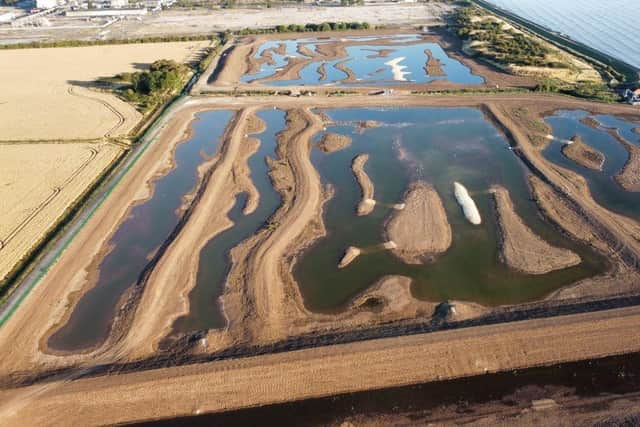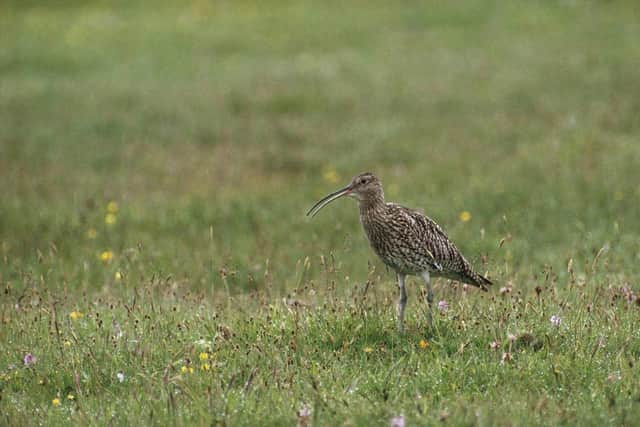New 'motorway service station' for birds on Humber attracts hundreds of waders
But for wading birds it's the equivalent of a motorway service station, where they can stock up for their long migratory journeys ahead.
Even before the water was added to the lagoons, channels and scrapes, 100 curlews have been using the Novartis Ings site, along with a flock of 30 black-tailed godwit - both endangered species - and many more will come as winter sets in.
Advertisement
Hide AdAdvertisement
Hide AdPharmaceutical giant Novartis gifted the 35 acres as an environmental legacy ahead of closing down their manufacturing site next door later this year. The birds’ behaviour is driven by the tides, feeding when the invertebrate rich mudflats are exposed, usually twice a day.


As the tide returns they fly inland looking for a roost - and like humans prefer an easy option. However the saltmarshes they once used have mostly been drained or developed. Environmental consultant Roger Wardle said if they have to fly far away looking for a roost they waste valuable energy.
Mr Wardle said they didn't want to be doing a 20km round trip: "What they are trying to do is fatten themselves and keep themselves alive in the col. That's using up their precious energy which could be laid down as fat reserves for their long migratory flights north in Spring, or keep them alive when they would otherwise die of starvation.
"Waders must have a desolate open landscape to see predators coming. They will not tolerate disturbance - it wastes energy. There's lots of water, spits and little islands. They can sit there in the dark with less risk of being eaten by a fox."
Advertisement
Hide AdAdvertisement
Hide AdThe site is surrounded by fencing, which will keep in the cattle which will be grazed there to keep the grass down. One spin off is that the cows create micro habitats for insects the birds can feed on with their large footprints and their dung.


People can walk on the paths they used to and along the flood defences where they can get a good view. There's also a new bird hide. "The more people that can enjoy these birds the more protected it is from a few individuals that would like to damage it," said Mr Wardle. "The more people are interested, the more councillors and the government are prepared to spend on preserving suitable habitat."
One of the reasons the waders are having such a tough time is many of the sites they would have once used have been developed or are going to be developed. It's this which makes Novartis Ings more special says Roger.
Both Novartis Ings and the nearby Cress Marsh site, which was built in 2018, have been created as part of the £42m South Humber Industrial Investment Programme that has already seen the creation of the new link road between Grimsby and Immingham, and a business park on the A1173 near Immingham.
Advertisement
Hide AdAdvertisement
Hide AdAs a condition of developments, mitigation land must be set aside especially for roosting waders. North East Lincolnshire Council has taken the innovative approach of building the roosts before they are needed for development.
